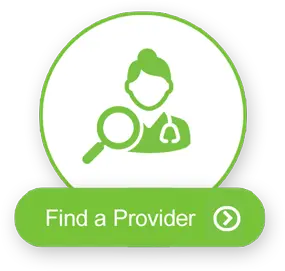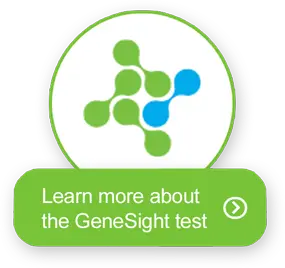Table of Contents
When you’re depressed, it can be hard to decipher doctor-speak. If you aren’t clear about what your provider is saying, it can be difficult to process the information the doctor is giving you, much less formulate the questions you need to ask.
If you have been diagnosed with Major Depressive Disorder (MDD), your doctor may use terms that may not be familiar to you. Understanding the language used by healthcare providers and learning how the severity of depression is determined can help you better communicate with your doctors.
How Can My Healthcare Provider Tell Whether I Am Sad or Depressed?
Throughout life, people face many situations that result in feelings of sadness or grief: death of a loved one, loss of a job, or the ending of a relationship. Your healthcare provider, during your appointment, will likely have an unstructured conversation with you to figure out whether you might be clinically depressed or whether you are struggling with a temporary sadness that is not depression.

With Major Depressive Disorder (MDD), the painful emotions tend to persist without much relief and often are paired with feelings of worthlessness and self-loathing. The National Institutes of Health writes that Major Depressive Disorder “causes severe symptoms that affect how you feel, think, and handle daily activities, such as sleeping, eating, or working.” These symptoms must be present for at least two weeks in order to be diagnosed with depression.
Why So Many Questions During Diagnosis?

Which is why healthcare providers, if they suspect the possibility of depression, often will use a diagnostic tool like a depression rating scale. They use the scale to determine whether your symptoms are indicative of depression and, if they are, the severity of the symptoms.
One of the most commonly used diagnostic tools is the Hamilton Rating Scale for Depression-17 (HAM-D-17. It focuses on 17 potential factors of depression related to mood, behavior, and symptoms. Your healthcare provider will complete the questionnaire based on how you’ve experienced or not experienced each factor during the past week.
Some of the questions your healthcare provider might ask include:
- Do you have a depressed mood (e.g., sadness, hopeless, helpless, etc.)?
- Do you experience feelings of guilt?
- Do you have thoughts of suicide?
- Do you have insomnia early in the night? In the middle of the night? Early hours of the morning?
- Do you have trouble working?
Based on your answers and your discussion during the interview, your healthcare provider will rate the scale items from 0-2 or 0-4, depending upon the question options, for each of the 17 items, indicating the degree of severity of each factor. For example, if you aren’t experiencing a symptom, the item would receive a “0” score. Increasing scoring for each item generally indicates increasing severity of the factor.
After your healthcare provider has completed scoring for each item, they will tally your score. Then they will determine the severity of your depression using the HAM-D17 depression severity rating scale:
- 0-7: No Depression
- 8-13: Mild Depression
- 14-23: Moderate Depression
- 24+: Severe Depression
The Complex Depression Equation: Treatment Options
After your depression severity is determined, your healthcare provider will speak with you about ways to lessen your depression (and improve your score).
According to a quick reference guide, Treating Major Depressive Disorder (note: this links to a PDF), available from the American Psychiatric Association (APA), the severity of depression helps your healthcare provider determine an appropriate course of treatment. The provider will likely discuss your history, including medical, psychiatric, prescription, personal, and family. Taking into consideration your clinical condition, they will decide whether your treatment should take place at home (outpatient) or in the hospital (inpatient).
Your healthcare provider then will choose an initial treatment plan, with the “aim to induce remission of the major depressive episode and achieve a full return to the patient’s baseline level of functioning,” states the APA guide. The APA advises healthcare providers to consider the following when selecting the initial treatment:
- “Severity of symptoms
- Presence of co-occurring disorders or psychosocial stressors
- Biological, psychological, and environmental factors contributing to the current episode of depression
- Patient preference
- Prior treatment experiences”
There are many ways to treat MDD, including therapeutic medication, psychotherapy (or talk therapy), a combination of medication and talk therapy, electroconvulsive therapy (ECT) or other forms of therapy. Additionally, some healthcare providers incorporate non-clinical approaches including diet and exercise changes. “Bright light therapy may be considered to treat seasonal affective disorder as well as nonseasonal depression,” according to the APA guide
The APA guide shares that your healthcare provider may consider using medication as part of treatment if you’ve responded well to antidepressants in the past; if your current symptoms continue to interfere with how you function day to day; you are agitated and/or struggle with insomnia or problems with your appetite; they think you may do better on medication long term; and if you feel comfortable taking medications for your depression.
During the medication selection process, your healthcare provider may suggest that you could be a good candidate for the GeneSight Psychotropic test. If you are a patient who has tried and failed depression medications, it may feel like the doctor is throwing darts at a dartboard from a mile away. Like moving closer to a dartboard to improve the chance for hitting the bull’s eye, the GeneSight test provides genetic insight, which the doctor can use to inform medication treatment and possibly improve your chances of finally feeling like yourself again.
The APA advises healthcare providers to consider using talk therapy as part of the treatment if you’ve responded well to this kind of therapy in the past; if you can find a counselor with whom you are comfortable; if you want to discuss challenges in your life or interpersonal issues; and/or if your condition is mild or moderate.
Talk therapy only works if you feel open and comfortable talking about your depression and other aspects of your life. With talk therapy, what you typically get out of it is based on the effort you put in.
“Psychodynamic treatment is durable over the years,” Marian Margulies, PhD, a psychologist in New York City and candidate in psychoanalysis at the Institute for Psychoanalytic Education at the NYU Medical Center told Forbes. “The positive gains continue and grow over time as though some of the work gets further consolidated after therapy stops. This makes sense to me because it suggests that we continue to use the reflective lens in thinking about, talking about and expressing feelings about our inner lives after we end treatment. The whole talking-with-the-therapist process gets internalized so that self-therapy picks up where the actual therapy leaves off.”
What is Your HCP Noting During Check-In Appointments?
Achieving remission can be a long, hard road for people who suffer from clinical depression. The APA guide reports that most treatments take approximately four to eight weeks before a healthcare provider can determine whether the treatment is effective.
Your doctor’s goal is to see a reduction in the severity of your depression symptoms. Specifically, your healthcare provider may use the following terms to discuss depression treatment goals:
- Symptom Improvement: Any change in your HAM-D17 score (i.e., your score reducing from 22 to 18)
- Response: A greater than or equal to 50% decrease in HAM-D17 score (i.e., your score reducing from 22 to 11).
- Remission: A HAM-D17 score has decreased to 7 or below (i.e., your score reducing from 22 to 6). This is the ultimate goal for your healthcare provider and you.
Sometimes, though, the decided-upon treatments do not provide the relief that you need. The STAR*D trial, which evaluated depression treatment, found that a trial-and-error approach to treating depression can be slow. Fewer than 40% of the participants achieved depression remission after several weeks of the first medication protocol.
After the four to eight weeks, if the recommended treatment does not seem to be effective, your healthcare provider may modify components. Depending on your side effects and other factors, the provider may take several different courses of action. For example, for medication treatment, a provider may adjust dosages, change medication, or add another medication to what you are already taking. If talk therapy has started, the provider may suggest additional sessions or trying a different therapist.
The APA treatment guide suggests that treatment-resistant depression may require different and/or more intense options. Some of the treatment options could include Electroconvulsive therapy (ECT), transcranial magnetic stimulation, or vagus nerve stimulation.
Continuation, Maintenance Phases of Depression Treatment
Once you have gotten your depressive symptoms under control, your healthcare provider will likely establish how treatment will happen during the “continuation phase.”
In many cases, according to the APA, the healthcare provider will not make any changes to treatment for at least four to nine months if the treatment is working (remission of depression symptoms).
“Given that there is a significant risk of relapse during the continuation phase, systematic assessment of depressive symptoms, functional status, and quality of life is essential,” the guide states.
After this period, the healthcare provider will evaluate your condition and determine whether to alter your treatment plan.

Because there is a potential for relapse, the APA advises providers to continue monitoring their patients. If you relapse, there should be a plan in place regarding treatment resumption.
While clinical depression can be hard to treat, the end goal for both you and your doctor is getting you back to feeling like yourself and living life as fully as possible. In clinical terms, this is defined as remission. Those reaching remission claim to feel more motivated, excited for social outings, less obsessive and more stable regarding their mood.
For more information about depression, read these GeneSight blog posts:
https://genesight.com/blog/patient/5-things-to-know-before-starting-antidepressants/
https://genesight.com/blog/patient/low-grade-or-high-functioning-depression/
https://genesight.com/blog/patient/what-are-the-treatment-options-after-a-mental-health-emergency/
Our articles are for informational purposes only and are reviewed by our Medical Information team, which includes PharmDs, MDs, and PhDs. Do not make any changes to your current medications or dosing without consulting your healthcare provider.
The GeneSight test must be ordered by and used only in consultation with a healthcare provider who can prescribe medications. As with all genetic tests, the GeneSight test results have limitations and do not constitute medical advice. The test results are designed to be just one part of a larger, complete patient assessment, which would include proper diagnosis and consideration of your medical history, other medications you may be taking, your family history, and other factors.
If you are a healthcare provider and interested in learning more about the GeneSight test, please contact us at 855.891.9415. If you are a patient, please talk with your doctor to see if the GeneSight test may be helpful.









